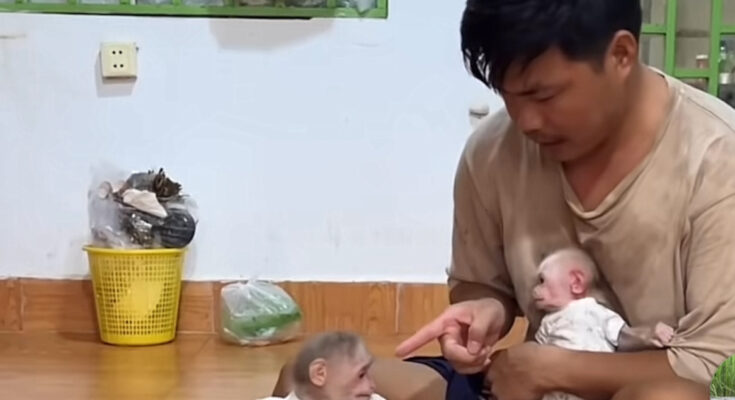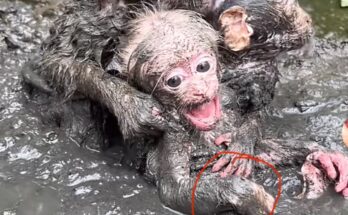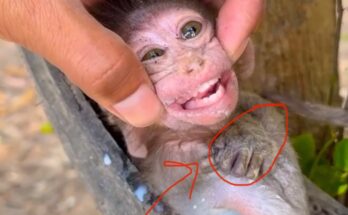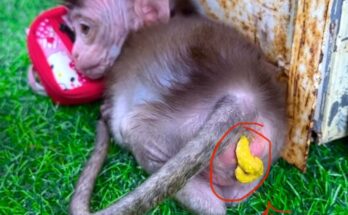In the dense heart of the jungle, survival is a constant struggle—not just against predators or environmental challenges, but often against one’s own kind. This harsh reality was painfully demonstrated when a small, timid monkey was severely bitten by a larger, dominant member of its troop. Though tragic, the incident reveals much about the complex social structures and behaviors that govern primate life.
A Harsh Encounter
The event unfolded in a tropical forest in Southeast Asia, where a troop of macaques had established a territory near a human settlement. The troop was led by an alpha male, a large and aggressive monkey that maintained strict control over the group. Among them was a smaller, younger monkey, newly integrated into the troop and still learning its place in the pecking order.
Conflict arose when the younger monkey attempted to approach a pile of fruit left by tourists. The dominant male, seeing this as a threat to his control over food resources, responded with aggression. In a matter of seconds, the big monkey lunged at the little one, delivering a harsh bite to its back. The smaller monkey screamed in pain and retreated into the trees, visibly wounded and frightened.
Understanding Primate Behavior
While this encounter may seem brutal to human observers, such aggression is a natural part of primate social dynamics. In many monkey species, dominance is established and reinforced through displays of strength. Biting, chasing, and physical intimidation are tools used by alpha males and even high-ranking females to maintain their position within the group.
What happened to the poor little monkey is not uncommon. Juveniles and low-ranking members are often subjected to harsh treatment when they overstep boundaries. This behavior is not born of cruelty, but rather a survival mechanism embedded in their evolutionary history. Maintaining clear hierarchies helps reduce the frequency of conflict within large groups and ensures that resources are distributed according to social rank.
The Aftermath and Human Concern
The injured monkey was later observed limping but still able to climb and forage, a sign of resilience. However, such incidents raise important questions about the impact of human interaction on wildlife. Tourists feeding monkeys may unknowingly provoke territorial disputes, increasing aggression among troop members.
Wildlife experts urge visitors to avoid feeding wild animals. What may seem like a kind gesture can disrupt natural behaviors and social structures. Moreover, increased contact with humans raises the risk of disease transmission and further endangers already vulnerable populations.
A Story of Survival
The story of the poor little monkey is a stark reminder that nature, while beautiful, is often unforgiving. Each bite, each chase, each scar tells a story of survival in a world governed by instinct and hierarchy. As humans, our role should be to observe, learn, and respect the delicate balance that keeps these intricate societies functioning.
By understanding these natural behaviors, we not only gain insight into our closest animal relatives but also recognize the importance of preserving their wild, untamed world.



